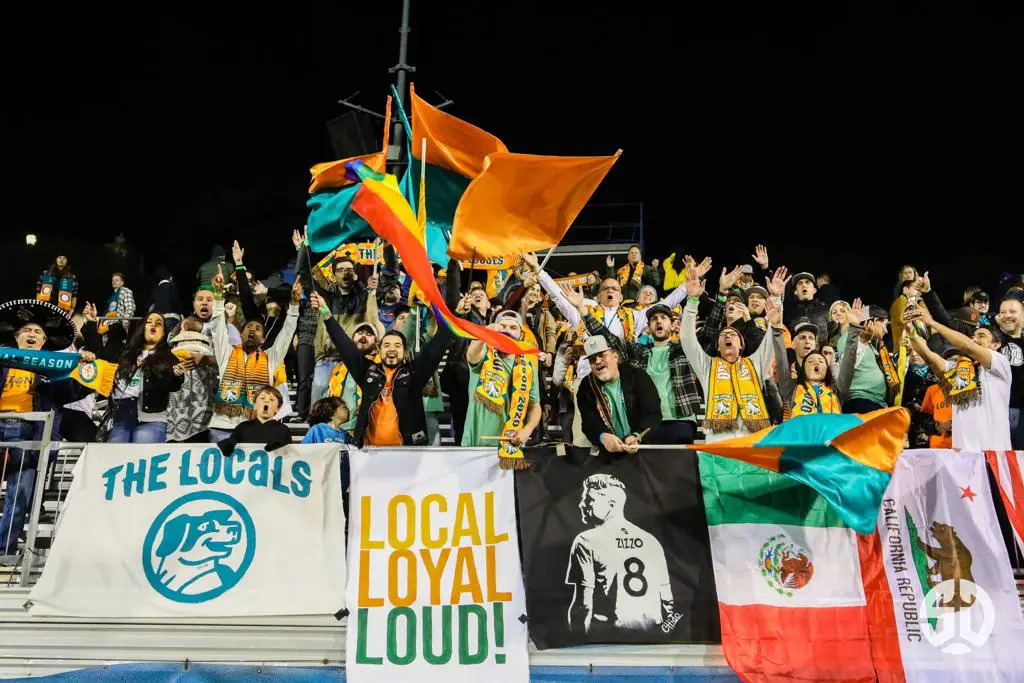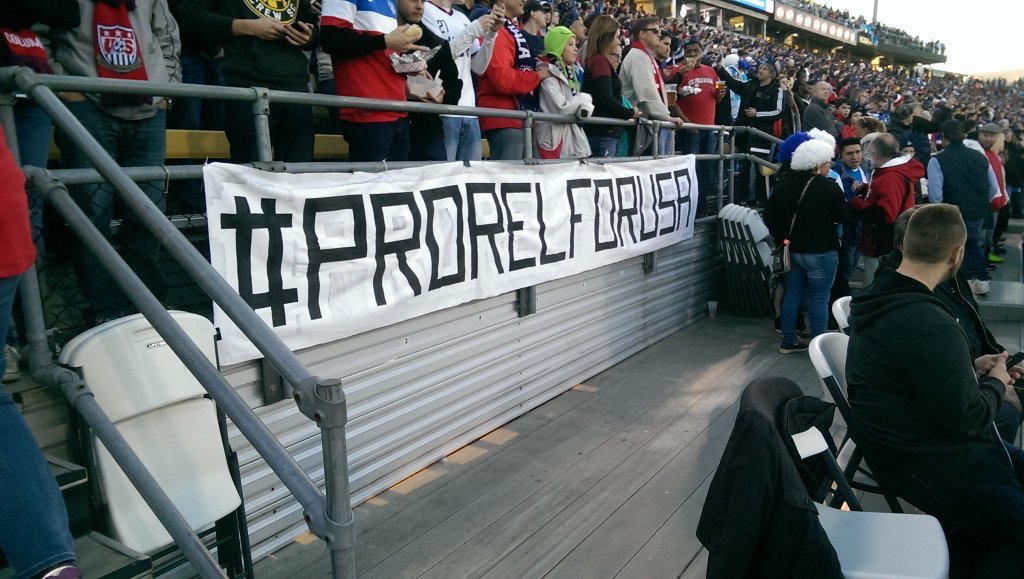In 2025, the new San Diego franchise is scheduled to begin play as the 30th team in Major League Soccer. The latest step in the league’s ambitious expansion efforts could leave the USL’s San Diego Loyal and their supporters out to dry — though they are optimistic that the two sides can co-exist.
Three years ago, the San Diego Loyal began play in the USL Championship, facing an uphill battle like many teams in the league. Major League Soccer is the big fish in the sea, and while USL teams are routinely competitive with sides from the top flight in tournaments like the U.S. Open Cup, there remains a large gap between the two leagues in terms of money, resources, and infrastructure.
Still, the Loyal began and added the condiment of having United States men’s national team great Landon Donovan as their first head coach.
Like much of what goes on in the USL, most of the Loyal’s exploits were on the backburner of American soccer. Then the club made national headlines in September 2020 when defender Elijah Martin received a racial slur from LA Galaxy II player Omar Ontiveros. In an unprecedented stand against racism, the squad led by Donovan, walked off the field in protest and forfeited the match.
Only one week later, the team forfeited another match after a homophobic slur was used against Collin Martin, an openly gay player.
Last season, the final with Donovan as manager before he would be elevated to executive vice president of soccer operations, the Loyal finished second in the Western Conference and made it to the quarterfinals of the USL Championship Playoffs and the third round of the U.S. Open Cup.
As a whole, the club has been competitive on the pitch, and have cultivated a healthy fan base with two officially recognized supporters’ groups, The Locals and Chavos De Loyal. The team plays to a current 2023 average attendance of 5,016 fans per game, the 13th-highest figure in the league this season. Their home grounds, Torrero Stadium at the University of San Diego, has a 6,000-seat capacity.
Despite a passionate fanbase, the San Diego Loyal have a lot to do to cause a bigger dent in the San Diego market, and it doesn’t help that MLS will be coming in fully loaded with an expansion franchise in 2025.
Out with the Organic and In With the Template

The organic support by the fans of the San Diego Loyal seems to be no match for the expansion template followed by many MLS teams. First, it’s about getting a loud owner. San Diego FC, as the new MLS franchise is known by for now, has that in Mohamed Mansour, who paid a record high $500 million expansion fee to enter the league.
Within a day of the expansion, a total of 5,000 season ticket deposits had been sold. Basically, the average attendance of the Loyal in season tickets. The club plans to work with a lot of focus groups and soccer fans in the San Diego area to eventually land on the name of the club.
The Loyal tried to bid for an expansion team, but that project never fully got off the ground. With a massive juggernaut heading their way, the Loyal supporters hope there is room for both a local club and top flight franchise in San Diego.
Jason Radcliff of the Locals supporters’ group is hopeful that the Loyal can continue to run at their own pace as the new MLS San Diego team draws closer.
“There is a lot of uncertainty, but we are committed to the club,” Radcliff said. “We are going to stay with the club. Maybe we can be an umbrella organization. Right now the opinion for us is we are going to stay loyal ’til we die.
“USL teams that have MLS presence have really struggled. We have that fear, but we have a lot of resolution in our group, and our leadership feel that we can make this work. We’re now into resolution and excitement that we can be the first place that survives.”
The Wait for the American Soccer Pyramid

The takeover of markets from MLS is similar to how Vince McMahon took over all of the wrestling territories in the 1980s, slowly stealing the talent and venues to present the WWE product. MLS has used a track record of previous support for soccer to “expand” their brand and fortify those teams. The best examples are the Seattle Sounders, Portland Timbers, and FC Cincinnati.
By putting together strong ownership groups with soccer stadium plans, the league has embedded a foothold in those markets, leaving supporters with a feeling of “promotion,” but really, it’s an upgrade or makeover than actual promotion.
The differences between MLS and USL are vast. The highest-attended teams in the USL Championship are Louisville City FC and New Mexico United, both averaging above 10,000 fans. In MLS it’s Atlanta United at over 46,000, Charlotte FC at 35,000, and Seattle Sounders at 30,000.
This of course, stems from a significantly higher amount of money and investment in the top flight. Most MLS teams are playing in their own state-of-the-art stadiums, while USL teams are barely playing on fields that can be considered professional. The budgets to manage these teams in MLS are three times as high on the field, and outside the field, all MLS teams have an executive infrastructure similar to other top flight leagues in the country like the NBA or MLB, while some USL teams run as mom-and-pop shops.
On Twitter, the debate of promotion/relegation is a philosophical one on how it can improve professional soccer. The reality is that promotion and relegation would be economical suicide for MLS and MLS Next Pro clubs if one examines the pure economics and realities of both products.
Still, Radcliff believes it will come one day.
“I think we are ready for a true pyramid, and it will come down to holding the line and I think that’s us,” he said. “We really think that if MLS and Loyal play nicely, we can coexist, and offer different things.”
And that seems to be what San Diego Loyal want, to be an alternative a community-based club which will appeal to those fans who want to be a part of a community, rather than the monster MLS team that will claim to be community-based and be instead run like a take-it-or-leave-it NFL franchise.
If MLS over-expansion has taught us anything, it’s that Major League Soccer is and will be the premier soccer league in the United States, while everything outside of the MLS system is fighting for the scraps. Eventually much like what McMahon did to wrestling, MLS will do to soccer in the U.S. — it will own the territory.
If promotion and relegation, the holy grail for many soccer fans in the United States, does come, it will most likely be under MLS’ terms. Hopefully the San Diego Loyal and their community-based supporters will still be there, fighting the good fight and cheering on their local soccer team, no matter the league or division they play in.








